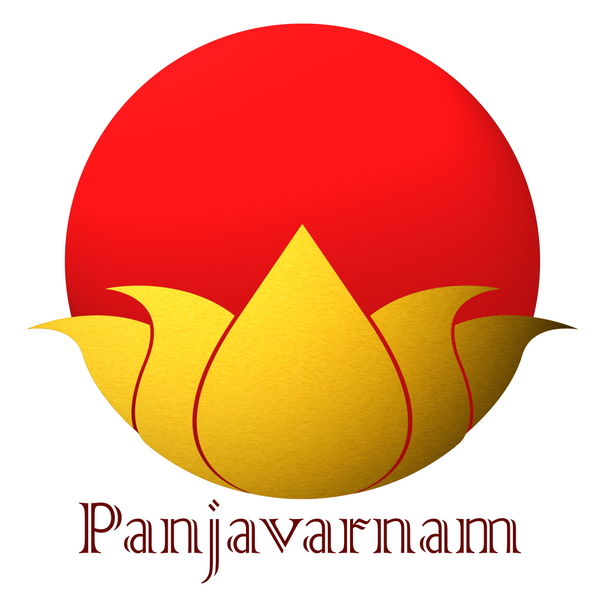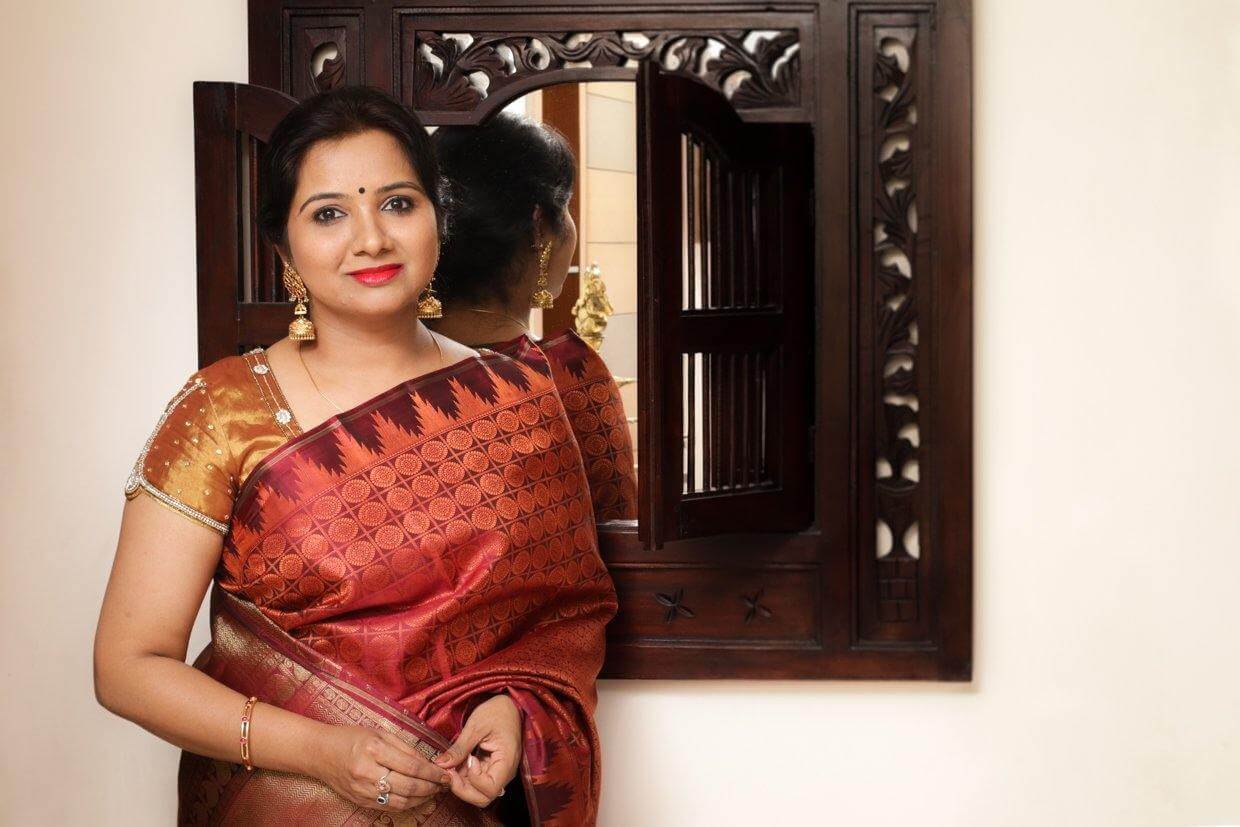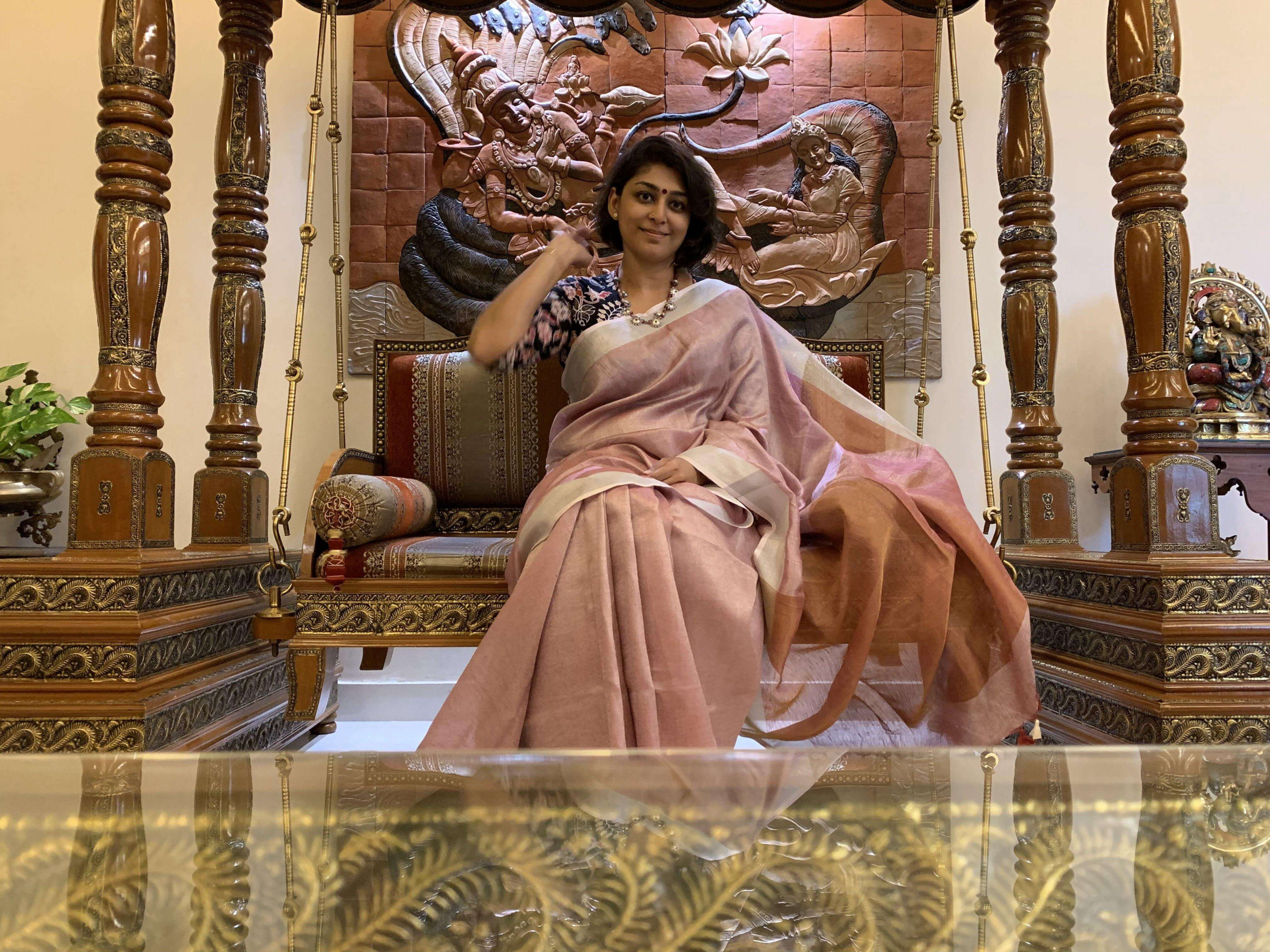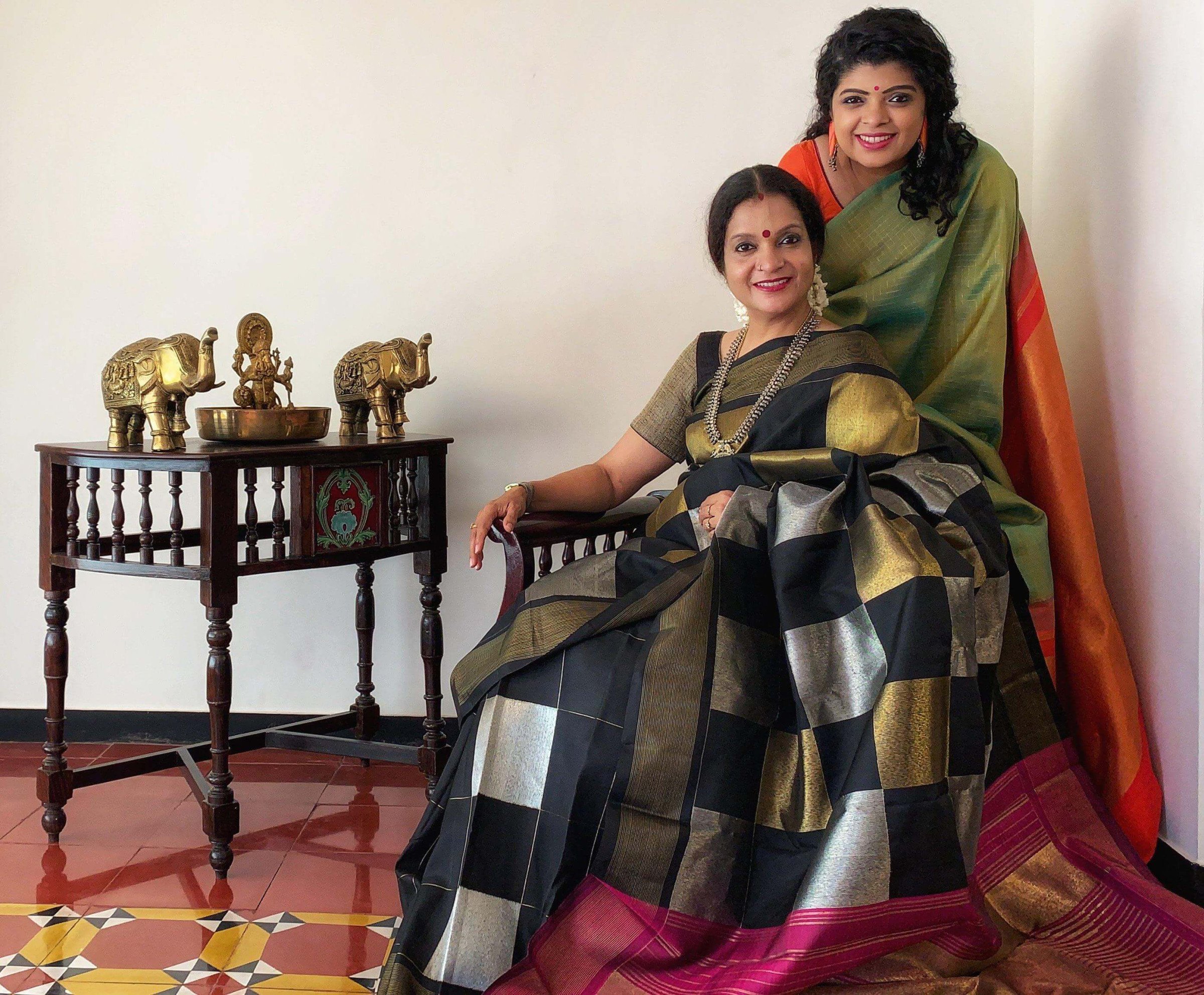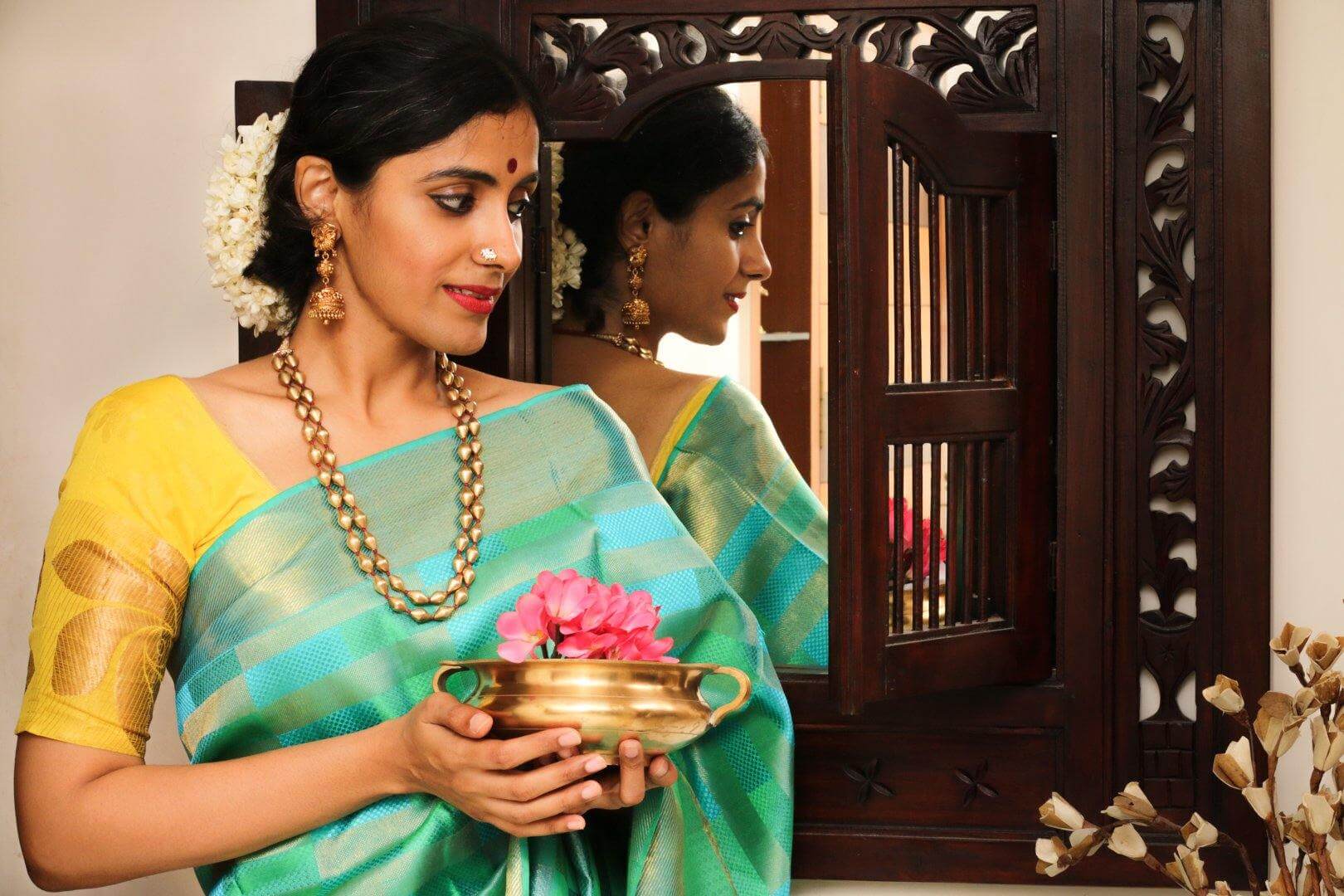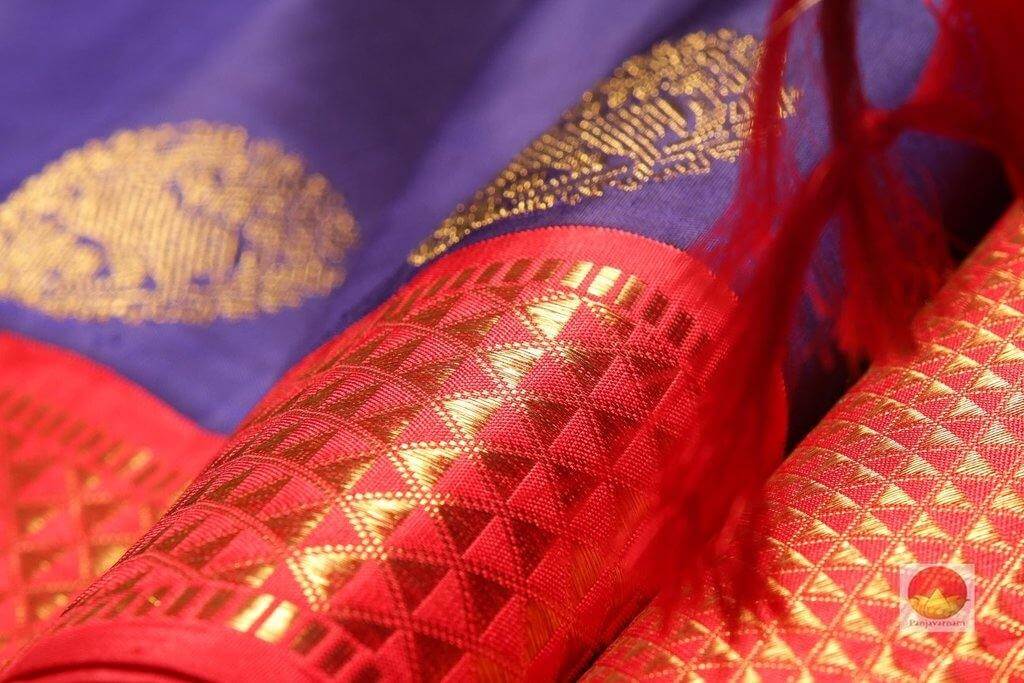Art as a discipline demands many dedicated hours of practice in a day. Women are natural multi-taskers and it is that great strength that has brought us so far in our achievements today. While multi-tasking is most natural to us, it still isn’t an easy task running a house, rearing a family and forging ahead in your career. And being a performing artist is definitely a step above.
This year’s edition of Panjavarnam Penn began with one such artist - Ms. Rama Vaidyanathan. While we still cannot get enough of her dancing, we are now enthralled by the mellifluous singing duo, Ranjani Gayatri, famously known among their rasikas (fans) as RaGa. They are not only known for their singing but for their Reverse Combination Kanjivaram Sarees.

Our collaboration with RaGa was a revelation to us in many ways. On the day of their concert at the Music Academy in December, we experienced the RaGa concert in person and were truly spellbound. The auditorium with a capacity of 1500 people was packed full, so much that people were made to sit on the stage along with RaGa and the other performing artists. There was a live minute-to-minute update of what they were singing and the audience immediate reaction to their singing. But the audience noticed everything - the smaller nuances while singing, the versatility, even their dress sense. Every comment in the fan page and their respective Social Media pages have people talking about every aspect of their concert presentation.
After all the attention-to-detail and concert frenzy we experienced, we had to talk to them. We asked them the same old questions any fan would ask. Here’s a snippet of our conversation and what Ranjani and Gayatri had to say.

What is your favourite Raga?
Every raga has to be sung like it's our favourite raga. That is when you experience the beauty of that raga and sing using its full potential. We do have quite a few favourites ourselves, but as a principle, we sing every raga with as much love as possible.

How did the reverse combination come about?
We never thought of wearing reverse combinations until it happened to us. One day, when we went shopping for sarees for the season, both of us picked up a similar which incidentally was the reverse colour combination of the other. We instantly fell in love with the idea. But to find reverse combination sarees is not that easy. We do work with tharis and handloom to get the required reverse combinations done, particularly of the designs we love.

Has it always been traditional Kanjivaram Sarees or have you experimented with cotton and other types of sarees?
For the December-Margazhi season and for out of town concerts we generally wear only Silks. We are open to experimenting with different sarees, but its always Kanjivarams for us.

Have you heard of the phrase “Iva uruttina ava pidichindoodara” (meaning: if one sister rolls in one raga the other one catches it) by the comedian Alex?
RaGa Laughs: Oh Yes! We have. As a matter of fact, we quite enjoy his comedy and did catch one of his shows. We like that his comedy is an experience that comes from experiences. Every art form should be.

Now that the reverse combination sarees are a part of your repertoire, how do you decide, who wears which saree?
Mostly depends on what we like. Sometimes we take it in turns to take the nicer looking saree. If we do not get the saree’s actual reverse we buy a similar looking saree and stitch a strip on the border to replicate the reverse designs. We have to ensure we work with kai-tharis, months ahead to get our combinations correct.

What do you like about Panjavarnam?
We love the range, its traditional and grand. The colours combinations are rare and unique. We love that the sarees curated here have a personal touch. We have always been great supporters of handloom silk sarees and we are glad that you support handloom weavers and are part of propagating kai-thari sarees.
